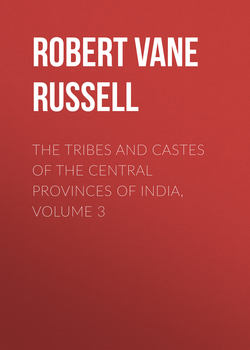Читать книгу The Tribes and Castes of the Central Provinces of India, Volume 3 - Robert Vane Russell - Страница 42
Gond
(c) Marriage Customs
24. Widow remarriage
ОглавлениеThe remarriage of widows is freely permitted. As a rule it is considered suitable that she should marry her deceased husband’s younger brother, but she may not marry his elder brother, and in the south of Bastar and Chānda the union with the younger brother is also prohibited. In Mandla, if she will not wed the younger brother, on the eleventh day after the husband’s death he puts the tarkhi or palm-leaf earrings in her ears, and states that if she marries anybody else he will claim dawa-bunda or compensation. Similarly in Bastar, if an outsider marries the widow, he first goes through a joint ceremony with the younger brother, by which the latter relinquishes his right in favour of the former. The widow must not marry any man whom she could not have taken as her first husband. After her husband’s death she resides with her parents, and a price is usually paid to them by any outsider who wishes to marry her. In Bastar there is a fixed sum of Rs. 24, half of which goes to the first husband’s family and half to the caste panchāyat. The payment to the panchāyat perhaps comes down from the period when widows were considered the property of the state or the king, and sold by auction for the benefit of the treasury. It is said that the descendants of the Gond Rājas of Chānda still receive a fee of Rs. 1–8 from every Gond widow who is remarried in the territories over which their jurisdiction extended. In Bastar when a widow marries again she has to be transferred from the gods of her first husband’s sept to those of her second husband. For this two leaf-cups are filled with water and mahua liquor respectively, and placed with a knife between them. The liquor and water are each poured three times from one cup to the other and back until they are thoroughly mixed, and the mixture is then poured over the heads of the widow and her second husband. This symbolises her transfer to the god of the new sept. In parts of Bastar when a man has been killed by a tiger and his widow marries again, she goes through the ceremony not with her new husband but with a lance, axe or sword, or with a dog. It is thought that the tiger into which her first husband’s spirit has entered will try to kill her second husband, but owing to the precaution taken he will either simply carry off the dog or will himself get killed by an axe, sword or lance. In most localities the ceremony of widow-marriage is simple. Turmeric is rubbed on the bodies of the couple and they may exchange a pair of rings or their clothes.
